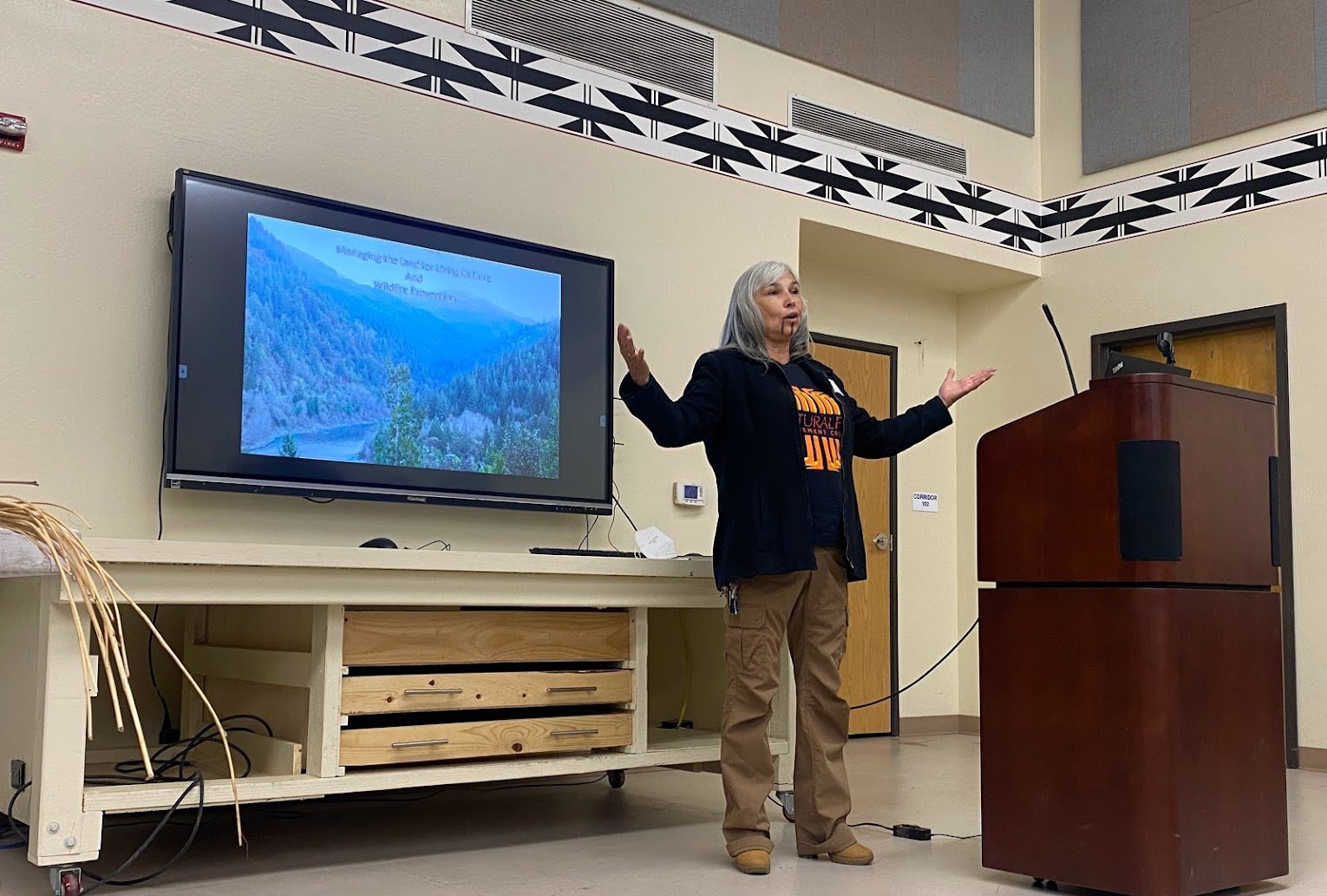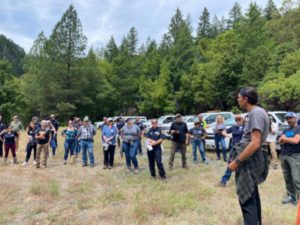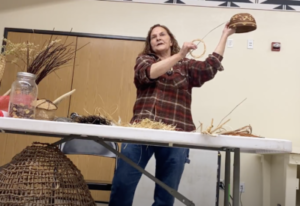
Culturing Burning: Building Leadership, Trust, and Capacity
The Karuk Tribe hosted a day long workshop that included presentations from Karuk and Yurok tribal members.
The California Department of Forestry and Fire Protection (CAL FIRE) is actively engaged with tribes to better understand how cultural burning is different from prescribed burning and then applying these lessons learned. By building relationships with tribal practitioners, CAL FIRE staff are gaining new insights into fire management and finding new ways to support tribal fire management practices.
As California continues wildfire and forest resilience efforts throughout the state, many changes are underway to empower governments at all levels and private landowners to treat more acres in the effort to keep California communities safe and better protected.
One tool in the toolbox for achieving this: using fire to treat brush and vegetation before wildfires occur. Prescribed fire and cultural burning are fuels reduction tools recognized as cost effective and ecologically beneficial to the landscape. Indigenous peoples in California have a long history of using fire to modify the landscape and cultural burning has been conducted by indigenous tribes for millennia. Reintroducing this tool to the landscape is a mutual goal for the California Department of Forestry and Fire Protection (CAL FIRE), and native tribes.


“By building strong relationships, and through the Tribes’ sharing of knowledge about cultural burning, we can gain a deeper understanding and connectedness to our environment that will help our staff to better support cultural burning,” said Len Nielson, CAL FIRE Staff Chief, Prescribed Fire. “This understanding is needed to have cultural burning occur at an increased pace and scale.”
It also fits within the department’s broader mission. CAL FIRE is responsible for fire protection and stewardship of over 31 million acres of California’s privately-owned wildlands. Assisting landowners and land managers with the support, knowledge, and skills to treat their property safely and effectively with fire is a critical strategy for sustaining the values we cherish for managing our state forests and other wildlands.
In this spirit, a number of activities are happening. CAL FIRE is supporting a burn boss training and certification, providing grants to Prescribed Burn Associations (PBAs), establishing a liability claims fund, creating prescribed fire training centers, and supporting California’s tribal communities to revitalize cultural burning. These are several of the strategies that CAL FIRE is working on to get more beneficial fire on the ground to help improve the health and resiliency of our forests.
“It was a pleasure to host so many great people from across multiple sectors of state government, and to have such a strong presence of CAL FIRE leadership at our event,” commented Bill Tripp, Director of Natural Resources and Environmental Policy for the Karuk Tribe. “It is, after all, the personal relationships and mutual understandings that we can establish based on real world, place-based situations that will help us to truly address the many challenges we face,” said Tripp.
The workshop included presentations from Karuk and Yurok tribal members and a field tour of previously burned areas showing how prescribed fire and cultural burning practices are interrelated for resource protection and revitalization of resources. In attendance were the CAL FIRE leadership team from Sacramento, local and regional foresters, archeologists, and environmental scientists from CAL FIRE and other state agencies. Building relationships and learning about the connections between culture and the landscape from tribal cultural practitioners is a good first step in fostering relationships with Tribal partners and other land managers in California to achieve our wildfire and forest resilience goals.
Photos: Tisina Parker
